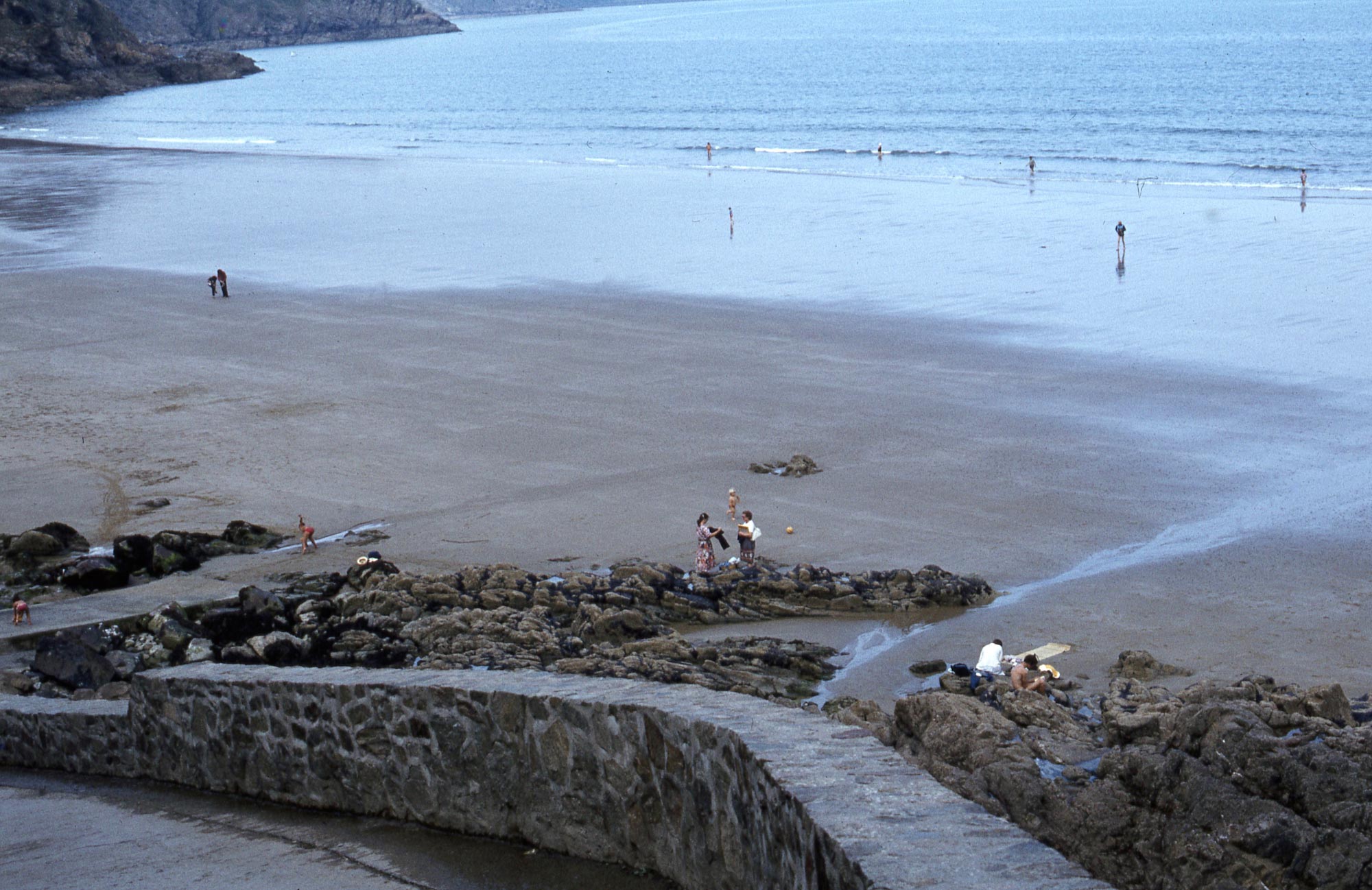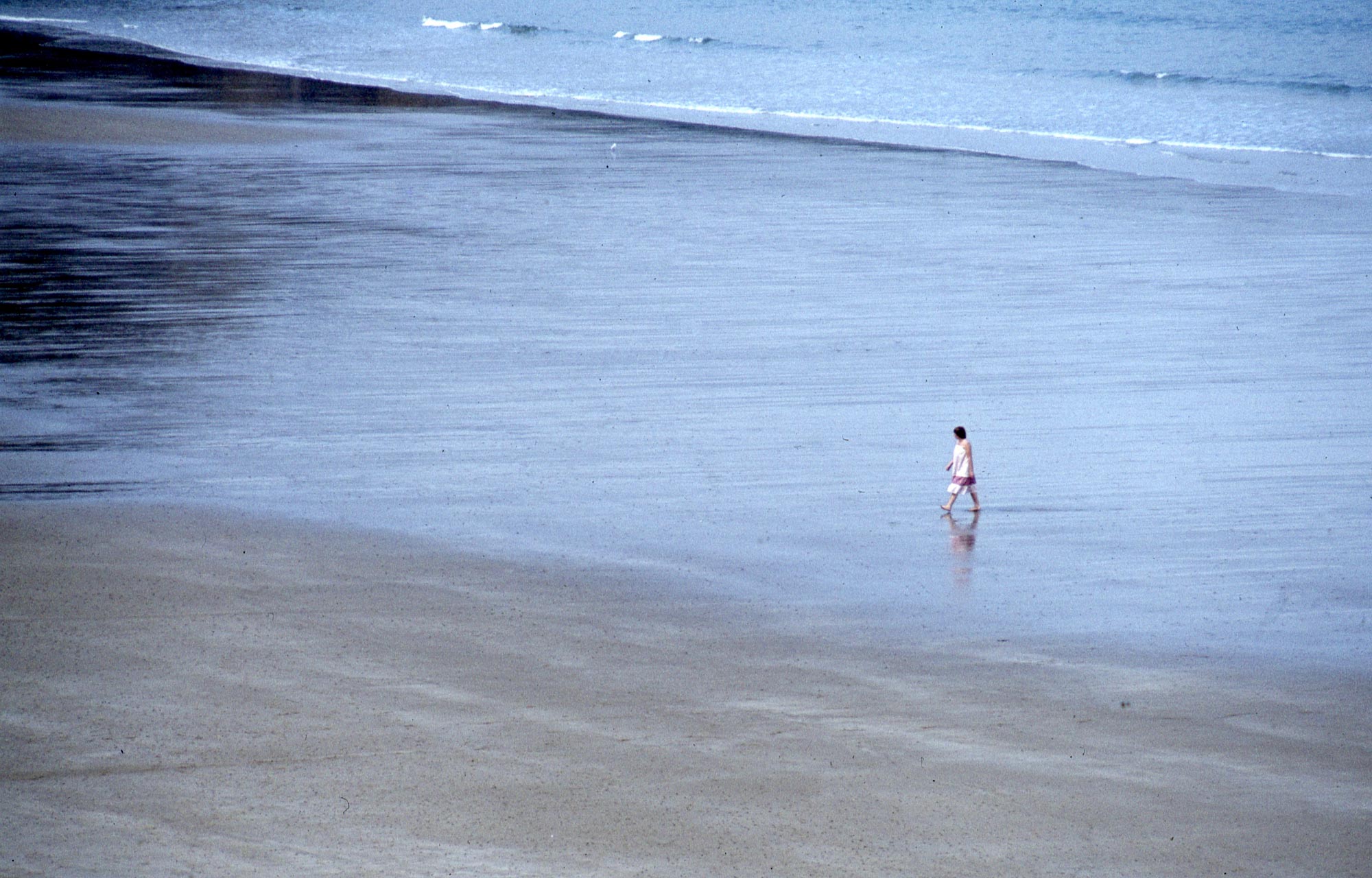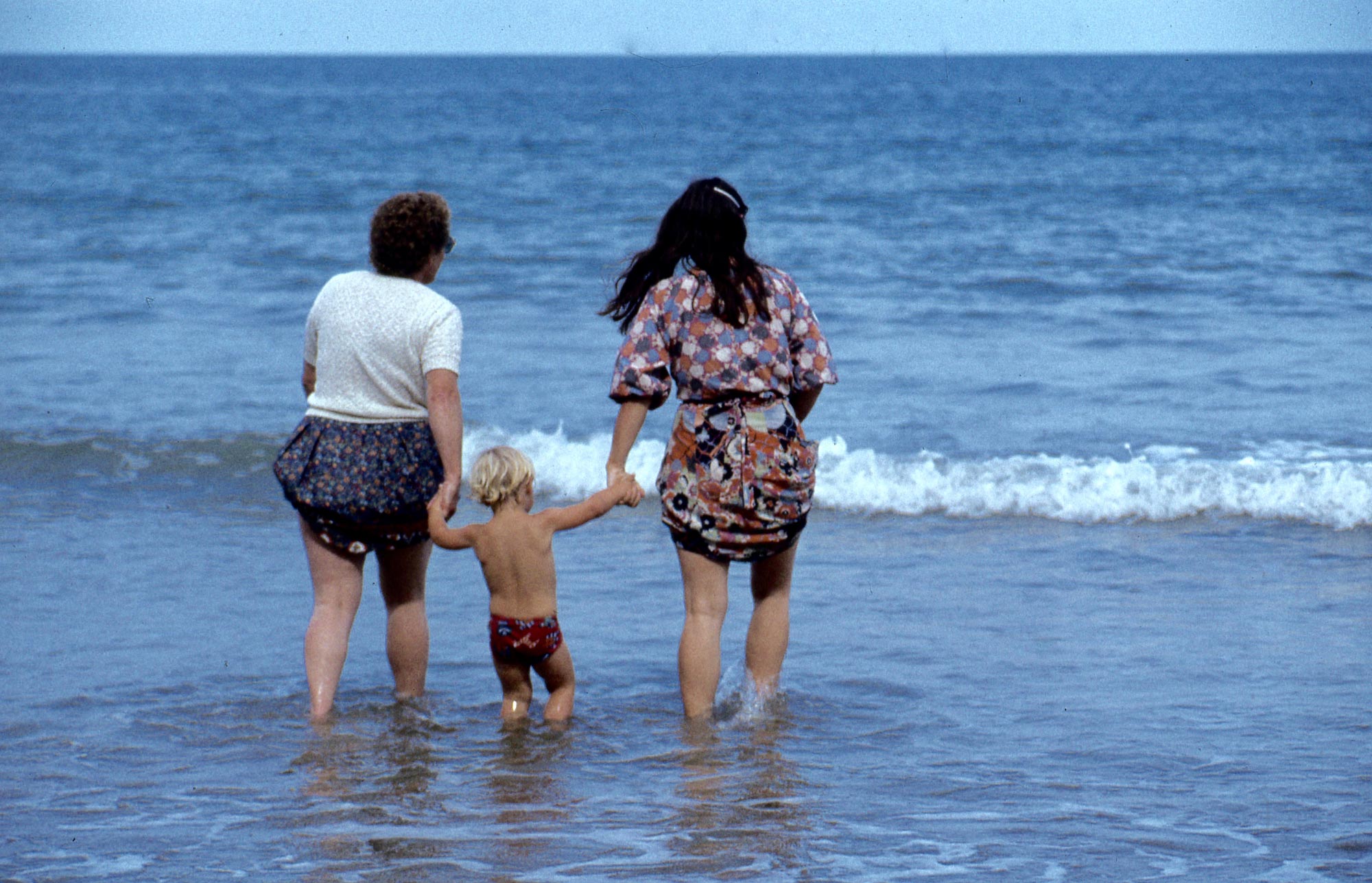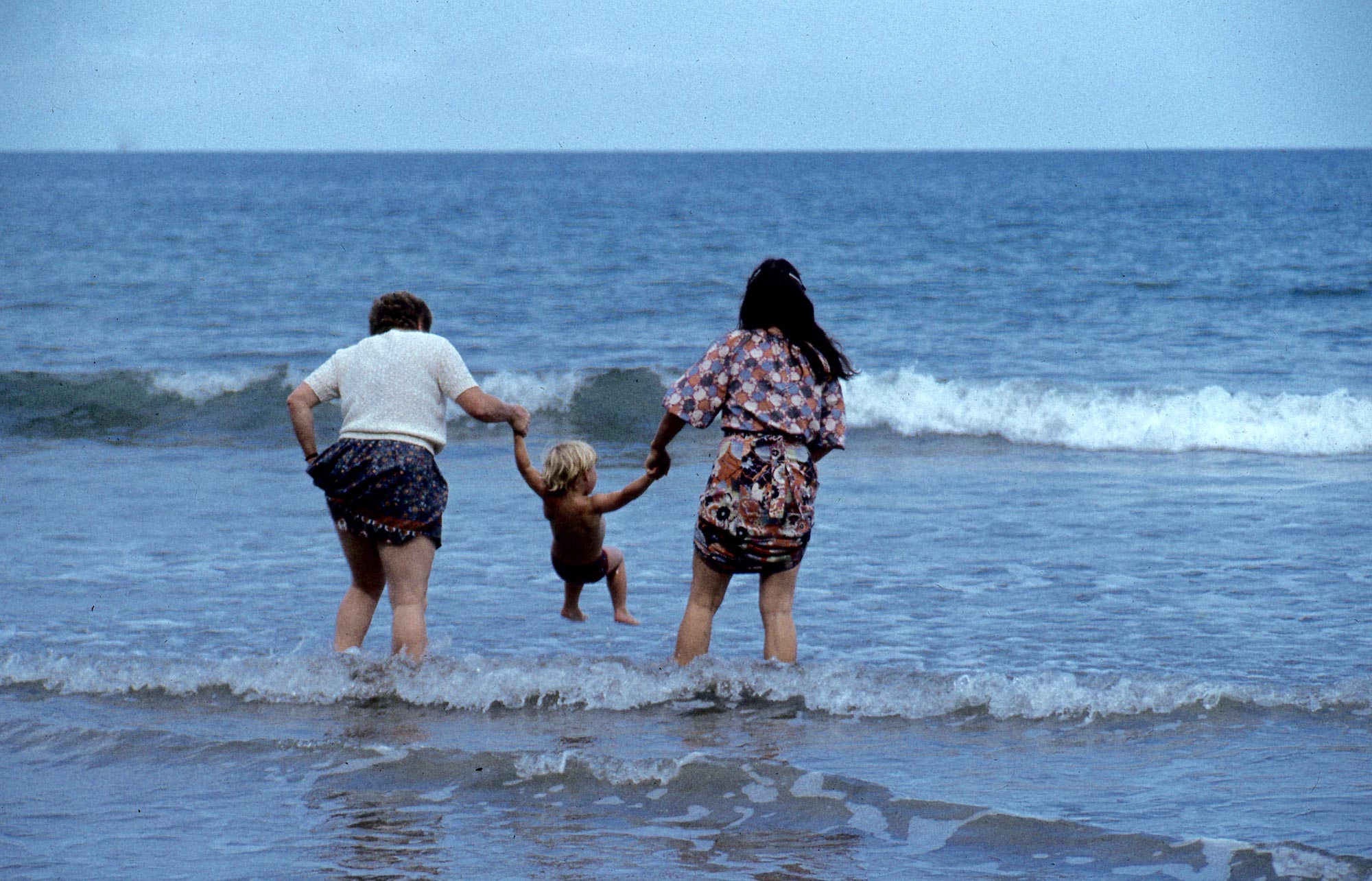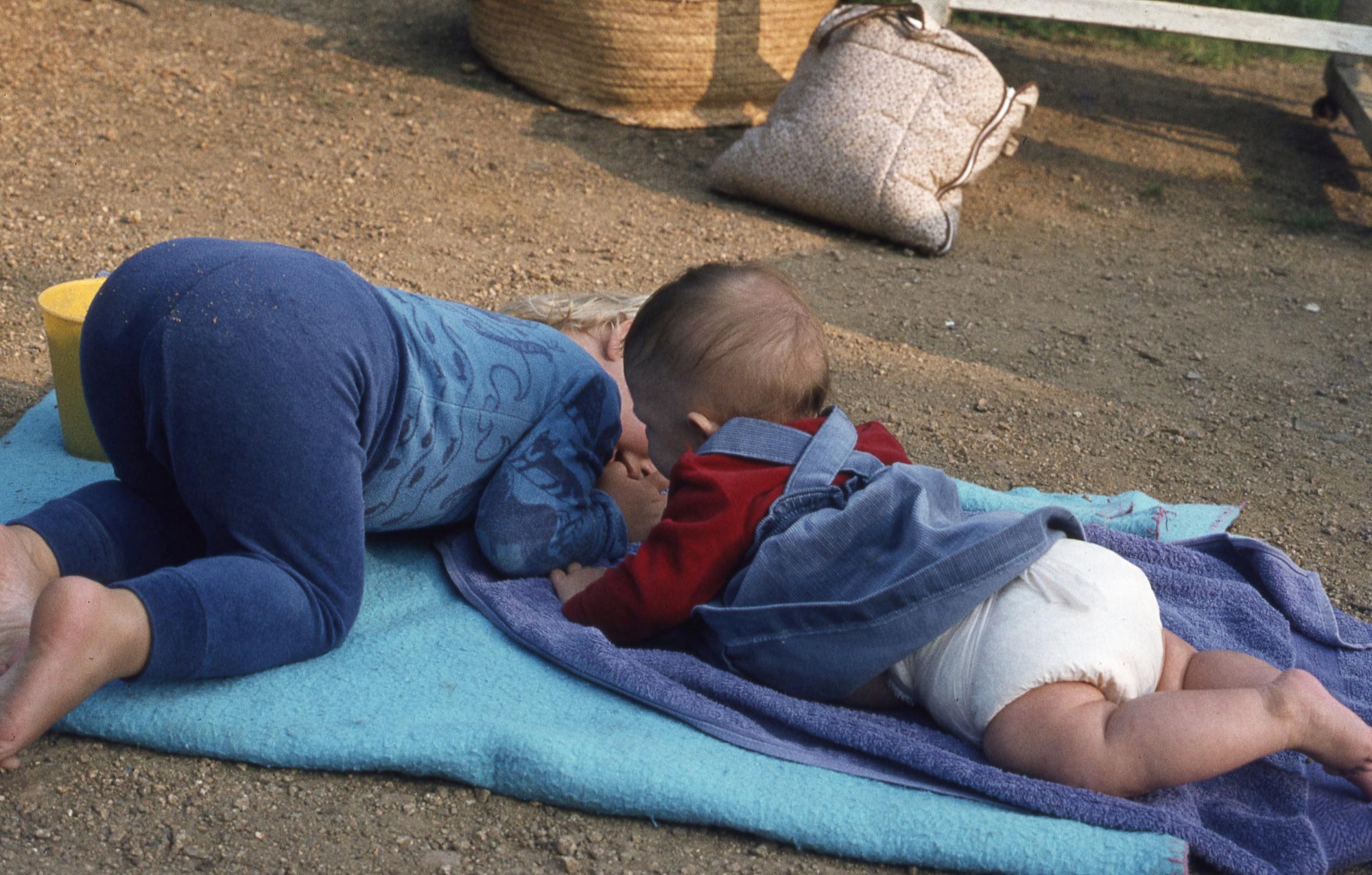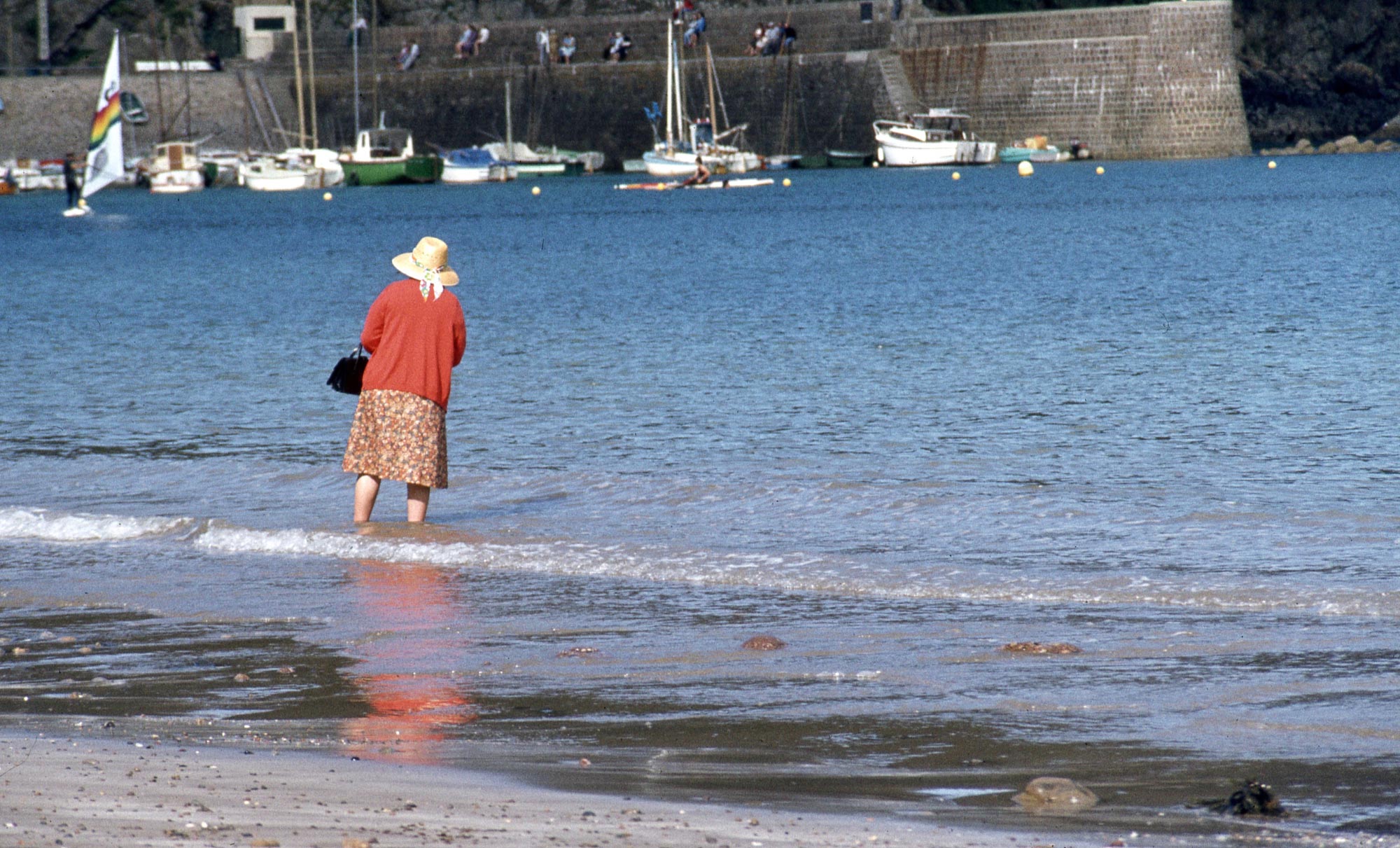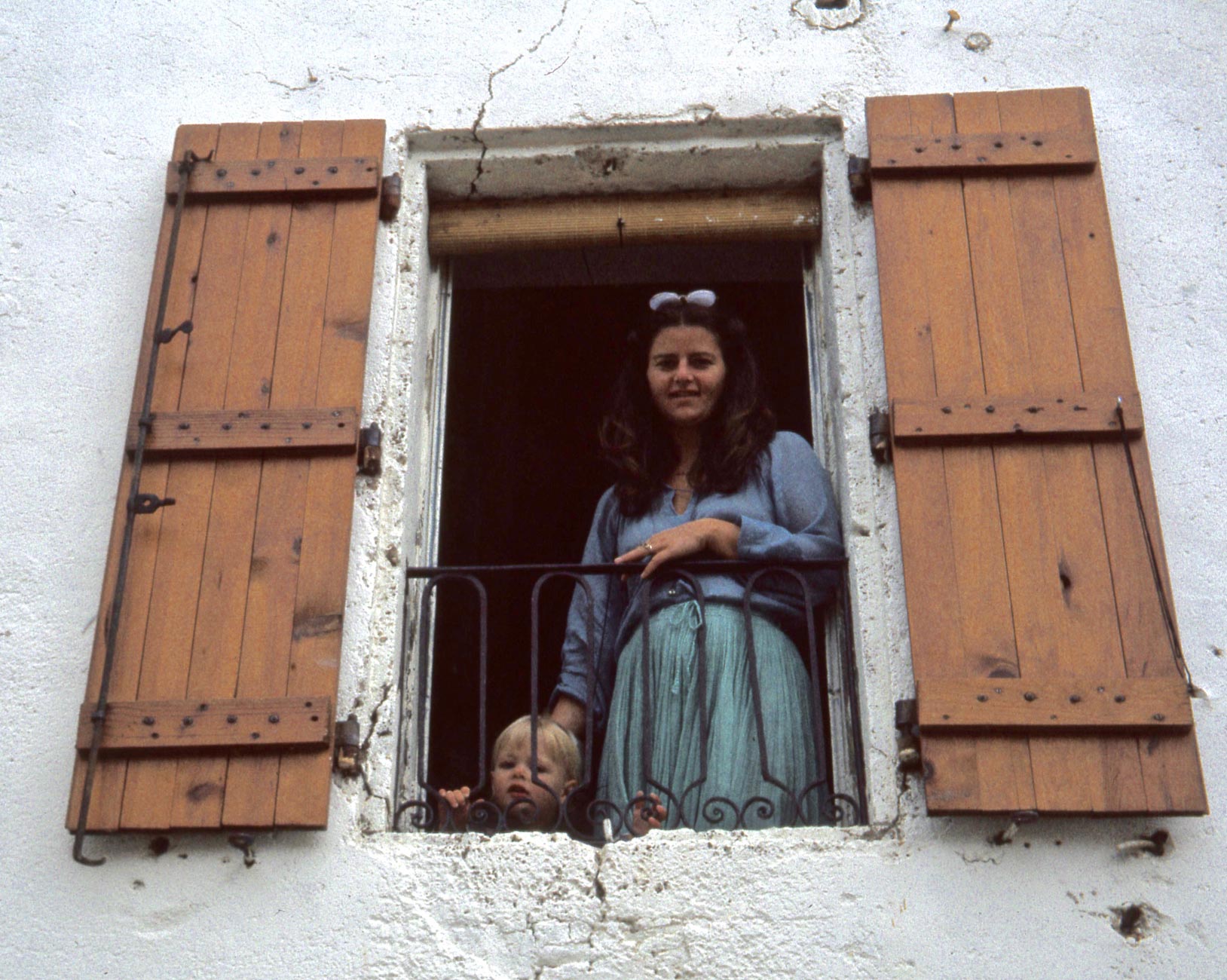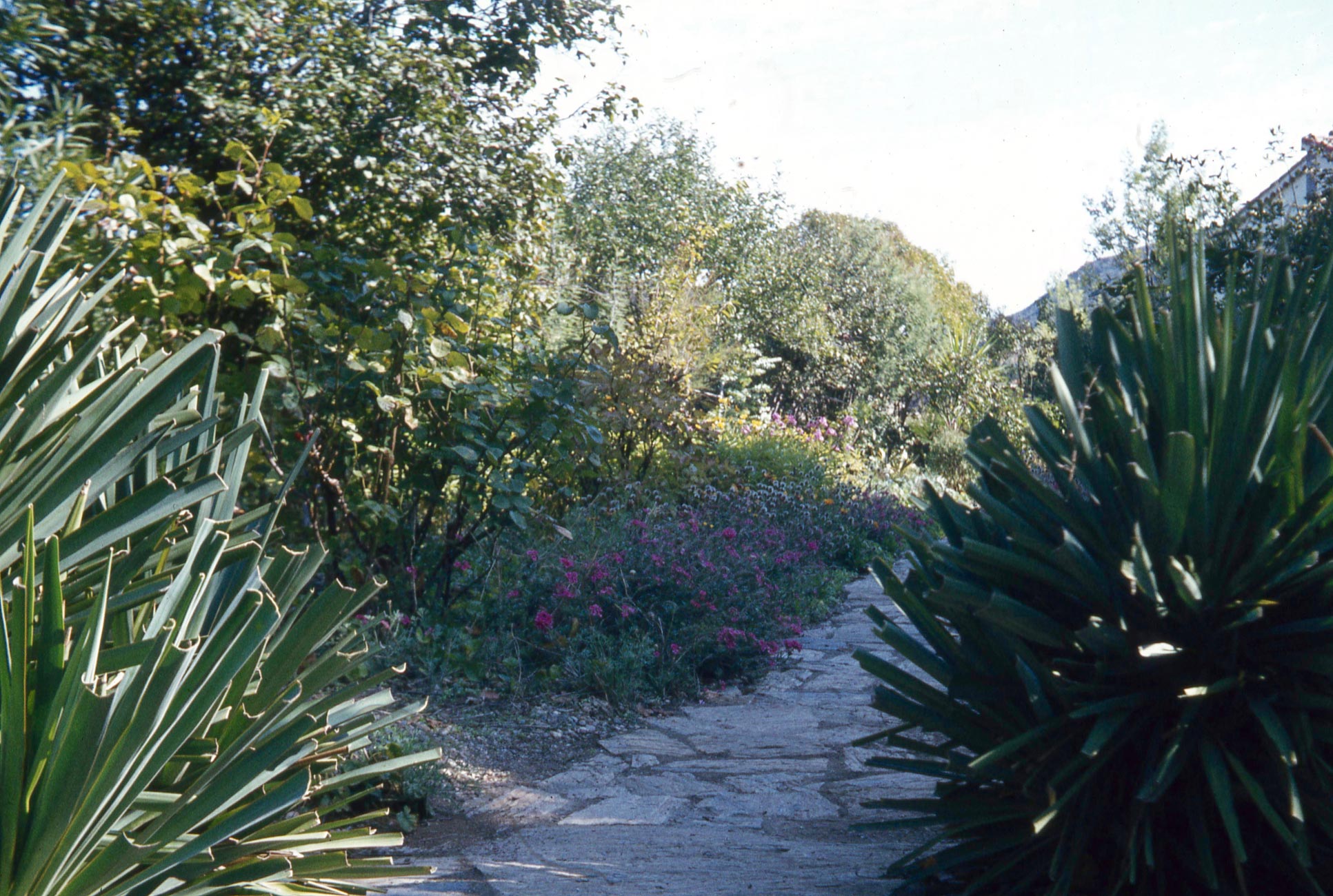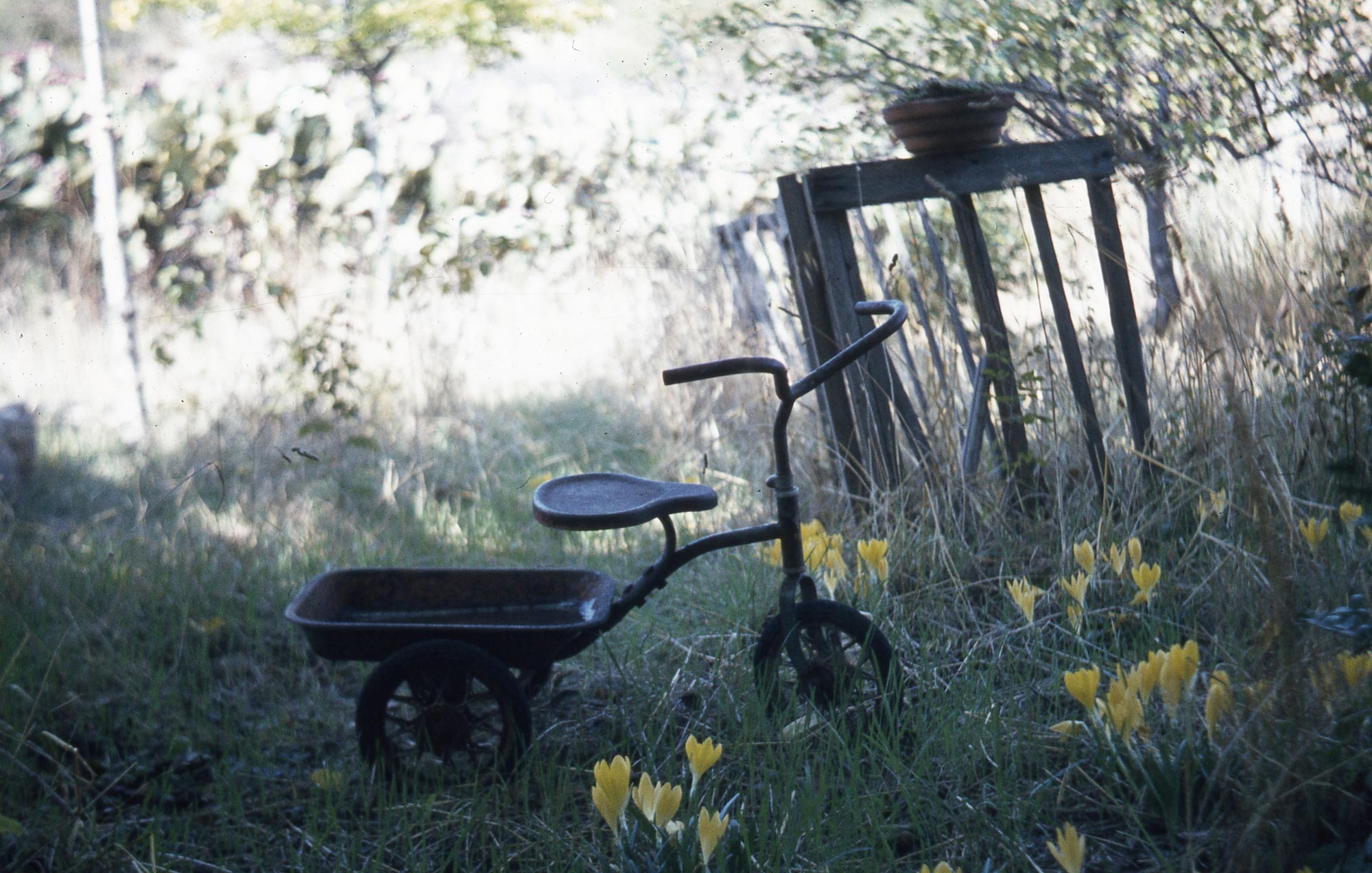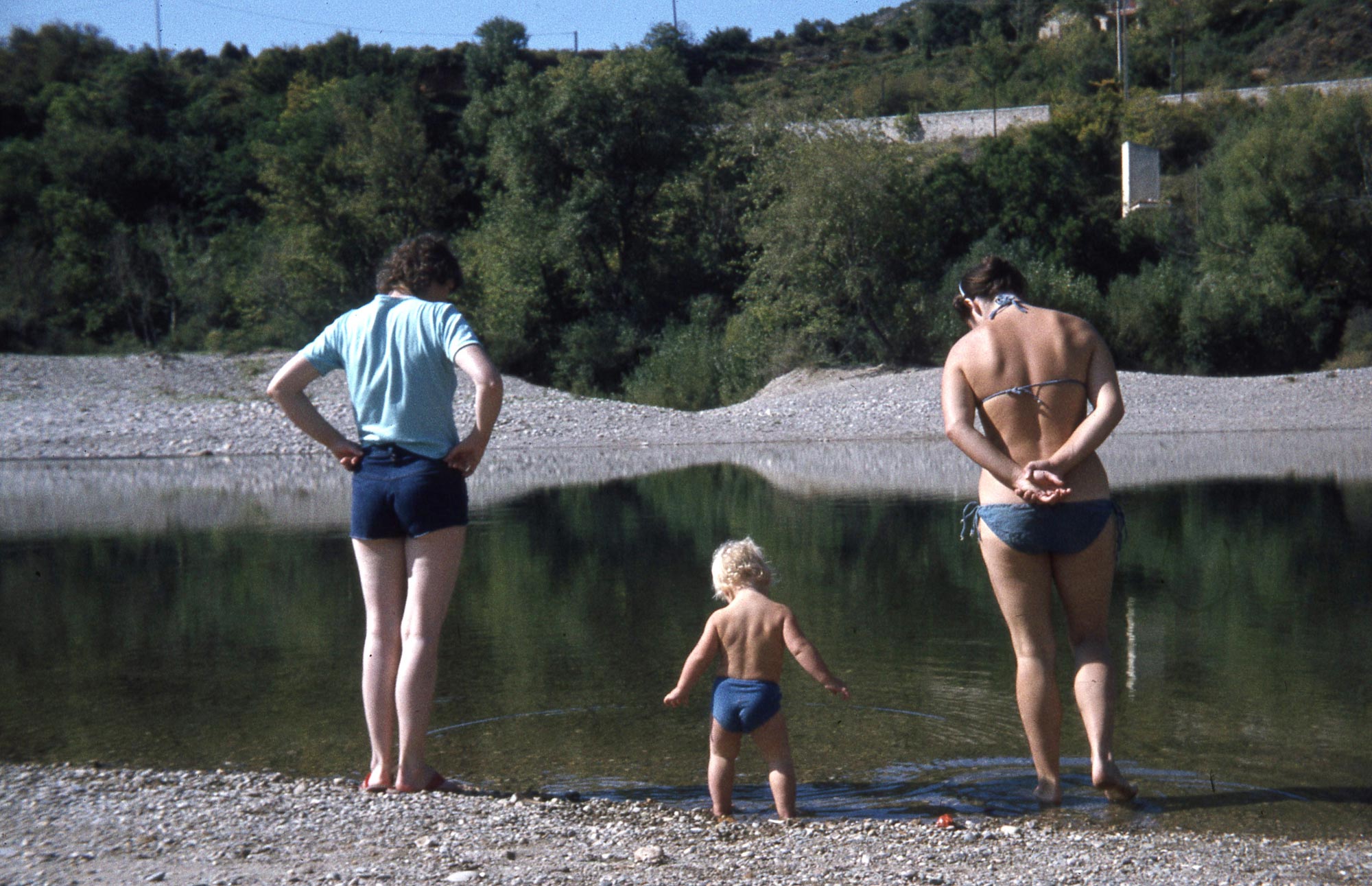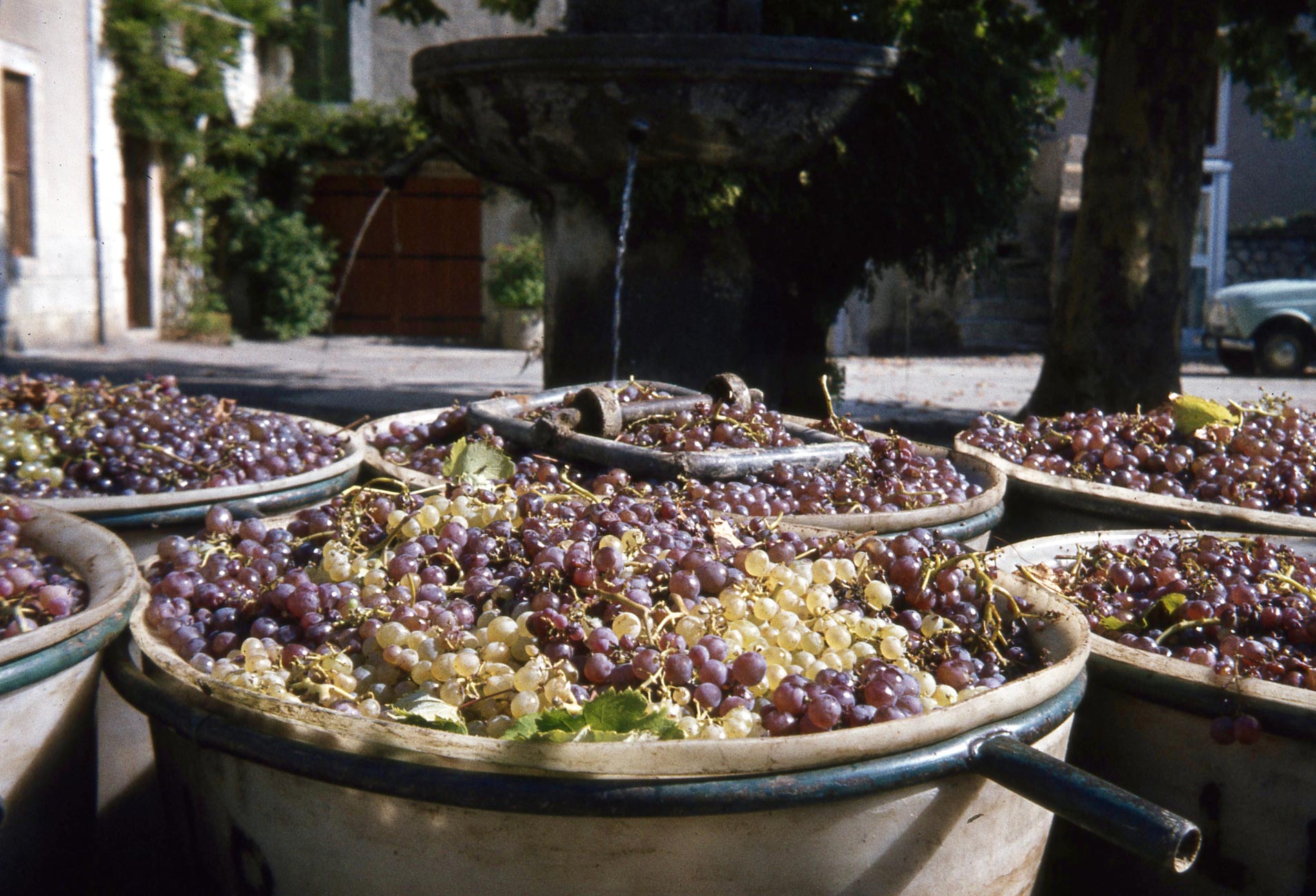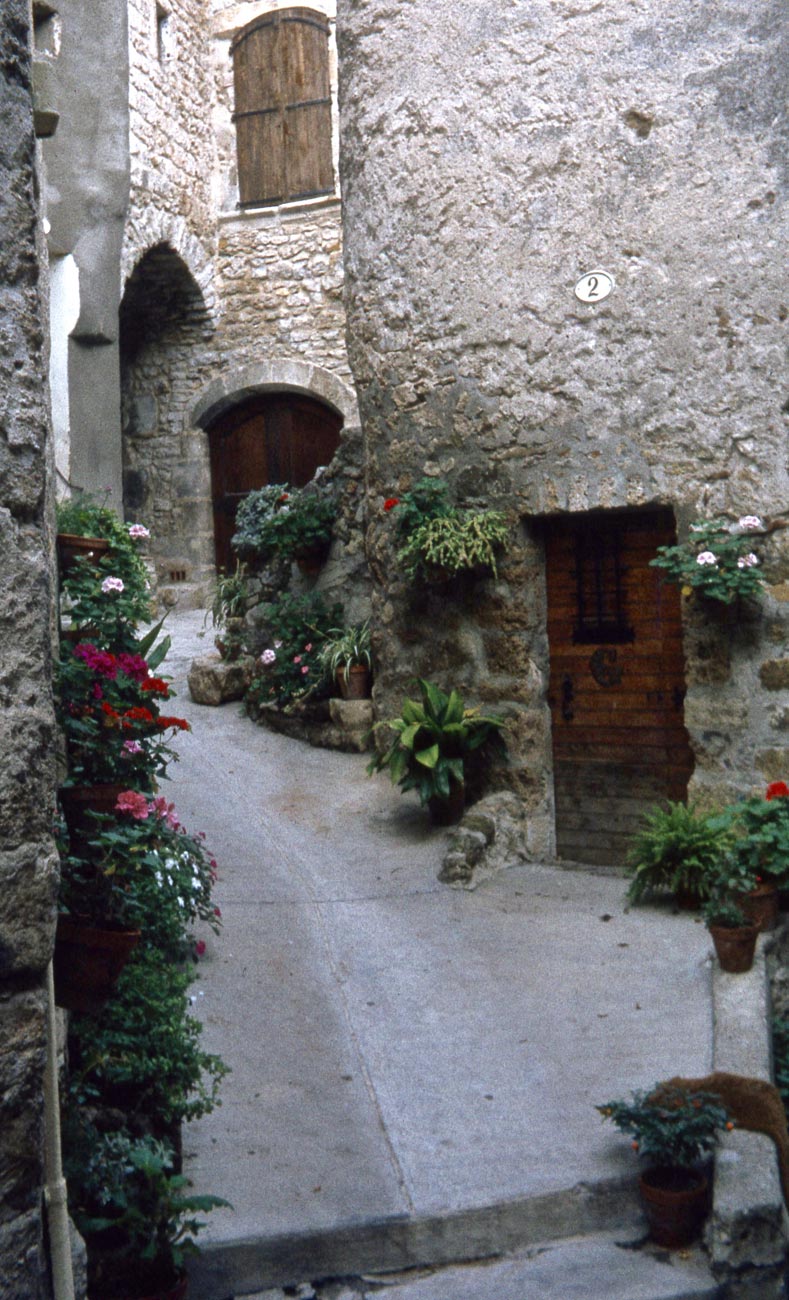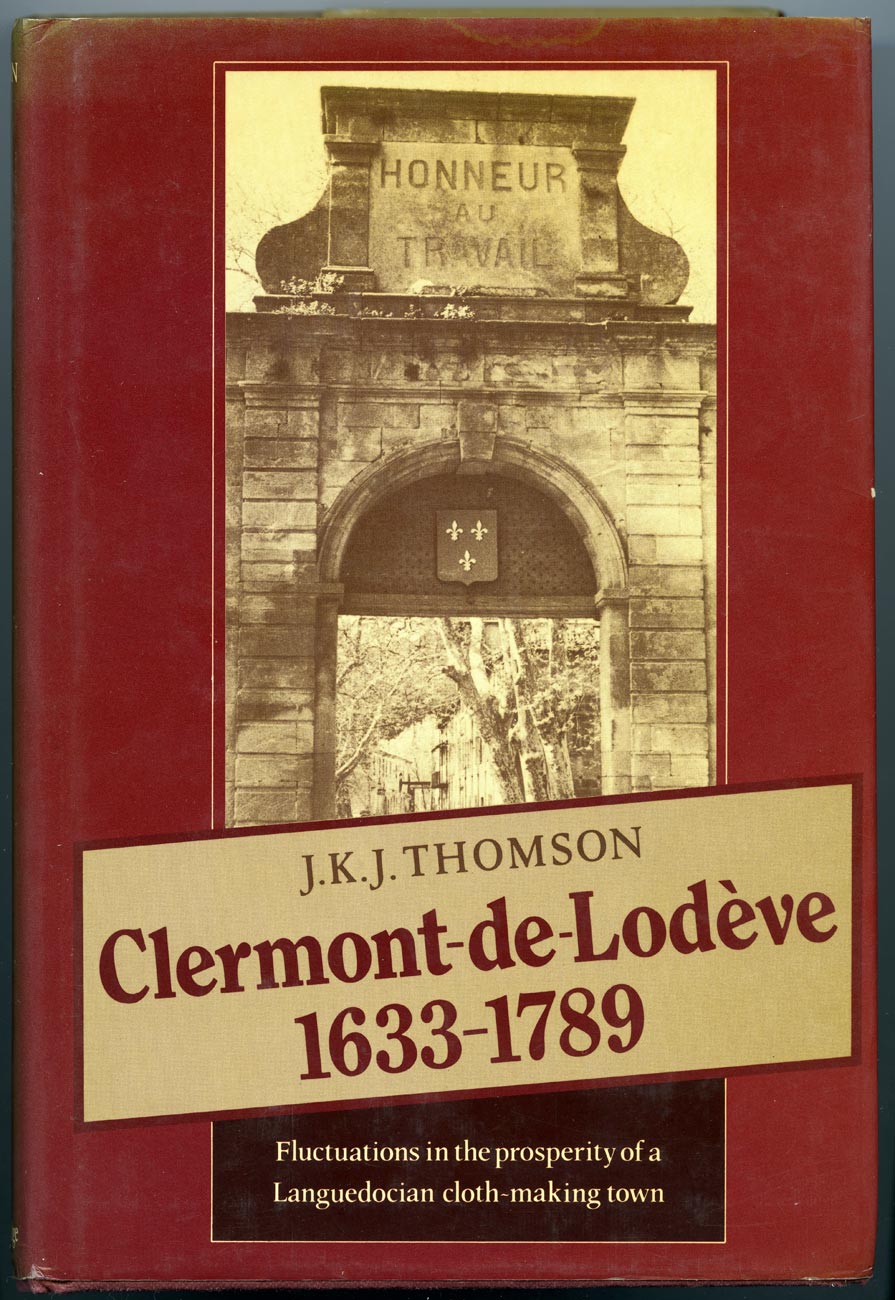Later in 1983, probably after we returned from the French trip, we holidayed in a farmhouse near Cerrigydrudion in North Wales, where friends Ann and Don were refurbishing their recently acquired house.
Sam was soon at the wheel of an elderly tractor, whilst Louisa engaged the attention of the cattle.
This misty shot down the valley must have been taken early one morning.
Hills like this were all around us,
Blending so well with the rugged hillsides
were the abandoned artefacts of a disused slate mine, itself adding heaps to the mountain terrain.
In the foreground of this picture, Becky carries Louisa, and Jessica leads Sam towards another visitor in the doorway of a mine building.
It was in revisiting these images of terraced and semi-detached houses, perhaps once the homes of quarry workers, that I thought of Aberfan.
‘The Aberfan disaster was a catastrophic collapse of a colliery spoil tip in the Welsh village of Aberfan, near Merthyr Tydfil, on 21 October 1966, killing 116 children and 28 adults. It was caused by a build-up of water in the accumulated rock and shale, which suddenly started to slide downhill in the form of slurry.
Over 40,000 cubic metres of debris covered the village in minutes, and the classrooms at Pantglas Junior School were immediately inundated, with young children and teachers dying from impact or suffocation. Many noted the poignancy of the situation: if the disaster had struck a few minutes earlier, the children would not have been in their classrooms, and if it had struck a few hours later, the school would have broken up for half-term.
Great rescue efforts were made, but the large numbers who crowded into the village tended to hamper the work of the trained rescue teams, and delayed the arrival of mineworkers from the Merthyr Vale Colliery. Only a few lives could be saved in any case.
The official inquiry blamed the National Coal Board for extreme negligence, and its Chairman, Lord Robens, for making misleading statements. Parliament soon passed new legislation about public safety in relation to mines and quarries.’ (Wikipedia, on which there is much more information.)
This is one of the abiding memories of my young adulthood, and, indeed, parenthood. The whole of the UK, and possibly much of the world, was in shock, especially because the school had borne the brunt.
On a happier note we enjoyed numerous holidays at Gaeddren, with Annandon – the name shared by each of them because Sam and Louisa couldn’t tell the difference when they were very little and therefore made a portmanteau word suffice for each of them.
I carried out numerous training runs in the hills around Gaeddren. Perched on a hill above Cerrigydrudion, this house was an ideal point from which to engage in fell running. Since I used the roads, this wasn’t actually fell running, as I had done in the Lake District, but it felt like it. Watching the changing light as I ran up and down roads cut from this rocky land, passing flowing streams and rugged trees sometimes indistinguishable from the granite to which they clung, was a truly exhilarating experience. It was on one of these two hour marathons that I felt my only ‘runner’s high’. No pun intended. Please don’t think I could, even on the flat, run a marathon in two hours. Here, I use the word figuratively. A ‘runner’s high’ is a feeling of intoxicated elation, said to come at one’s peak. No further pun intended. Well, I never tried LSD. I did, however, find it useful pre-decimalisation. Pun intended.
When I did seek an even route I ran the complete circuit of Llyn Tegid, known to the English as Lake Bala. Having three times, once in 88 degrees fahrenheit, managed the Bolton marathon, which ends with a six-mile stretch up the aptly named ‘Plodder Lane’, with a vicious climb at the end, I thought I might attempt the North Wales marathon. Imagine my surprise to find it boringly, unrelentingly, flat. Here I will divert, as I once did in the Bolton race. My grandmother, then in her nineties, was seated on a folding chair in order to watch me come past. I left the field, nipped across, kissed her on the head, and quickly rejoined the throng. She seemed somewhat nonplussed, as did a number of other competitors. After all, why would anyone willingly supplement, even by a few feet, a distance of 26 miles 385 yards?


























